Cavalier King Charles Spaniel dog breed falls in the category of small toy dogs with short stature, big dark and round eyes, and a glossy hair coat.
They are known to be friendly towards all, with a great need for human companionship.
Favorite of King Charles II, they rose in popularity in the English Royalty with many commissioning paintings with their pets.
Named after the Cavalier King, Cavalier King Charles Spaniel temperament is described as affectionate, friendly and active.
After Charles II reign they witnessed a decline, with interest in this breed only coming back in the 1920s due to efforts of an enthusiast.
Even with the looks of a toy dog, they are playful and athletic with a tendency to chase everything moving.
Cavalier King Charles Spaniel puppies are born in a litter of 2 to 6 with the average being 5 puppies.
They weigh around 5-8 pounds at the age of 3 months when they are available for adoption.
They mature around the age of 12 months with most reaching their full height and weight potential around 18-24 months.
They need to be fed 4 times a day and taken out several times for pee and potty breaks.
It is important that during this time they are trained for house training and social interactions for their all-round development.
Adults weigh about 13-18 pounds and have a height of 12-13 inches.
They have large round eyes that are well apart set giving them an affectionate and charming expression.
They have a smooth and glamorous coat of hair with a slightly rounded skull and naturally feathered floppy ears.
Table of Contents
Cavaliar King Charles Pictures
Quick Facts

Avg. Weight: 13-18 pounds
Avg. Height: 12-13 inches
Life Expectancy: 9-15 years
Dog Group: Toy group
Colors: Blenheim, Black and Tan, Ruby, and Tri-Color
Other Names: Cavaliers, Cavies, Cav, Comforter Spaniel
At A Glance
Size (2/5)
They are short in size with most reaching 12-13 inches as their full height.
They have a slightly longer body compared to their height
Affection Level (5/5)
These dogs are very affectionate towards all whether they are other dogs, cats or people.
When they are young they need to have exposure to new social situations to be a well-mannered adult dog.
They are very affectionate to even strangers and have a “to-please” natural desire in them.
Due to this quality, they make ideal companion dogs to families and elderly people.
Apartment-Friendly (5/5)

They are very adaptable to living in the apartments and also due to their short body.
They have moderate exercise needs and are primarily house pets.
They don’t howl or bark much and having a calm demeanor makes them pleasant dogs for apartment owners.
Cold Weather Tolerability (3/5)
They have a single coat and don’t provide much insulation in frigid weather.
They need some extra protection to brave the cold and preserve their energy.
Make sure they don’t overheat due to their warm coats and clean their feet so they don’t eat the antifreeze, salt, and grit.
They also have the risk of getting frostbite due to being wet and their coat not being fully dried.
Hot Weather Tolerability (2/5)
They can’t tolerate heat with their coat acting as a warm sweater to them.
Due to the small shape of their muzzles, they have less effective cooling mechanism than other breeds.
Also, they have fur on their feet with heats them while walking on any heat-retaining surface.
They need good air flow to keep their body heat bearable with access to cold air and water at regular intervals.
Barking Tendencies (3/5)
They don’t bark much due to their mild and unassertive nature.
Mostly they greet strangers and unknown people with friendliness, even though they might bark while greeting them.
They only are said to bark whenever their situation requires it, like on hearing other dogs bark.
Cat-Friendly (4/5)
They get along with cats with many developing good relationships with the cats.
Due to the same sizes, they tend to be good playmates.
The need to be socialized early in life to be comfortable with felines as their innate spaniel tendency is to chase them.
Dog-Friendly (5/5)
This breed is known for its friendly and affectionate nature towards other animals.
On meeting new dogs they don’t show any signs of aggression and are more than willing to be friends with them.
They are more than happy to meet with other dogs and play with them.
Exercise Needs (3/5)
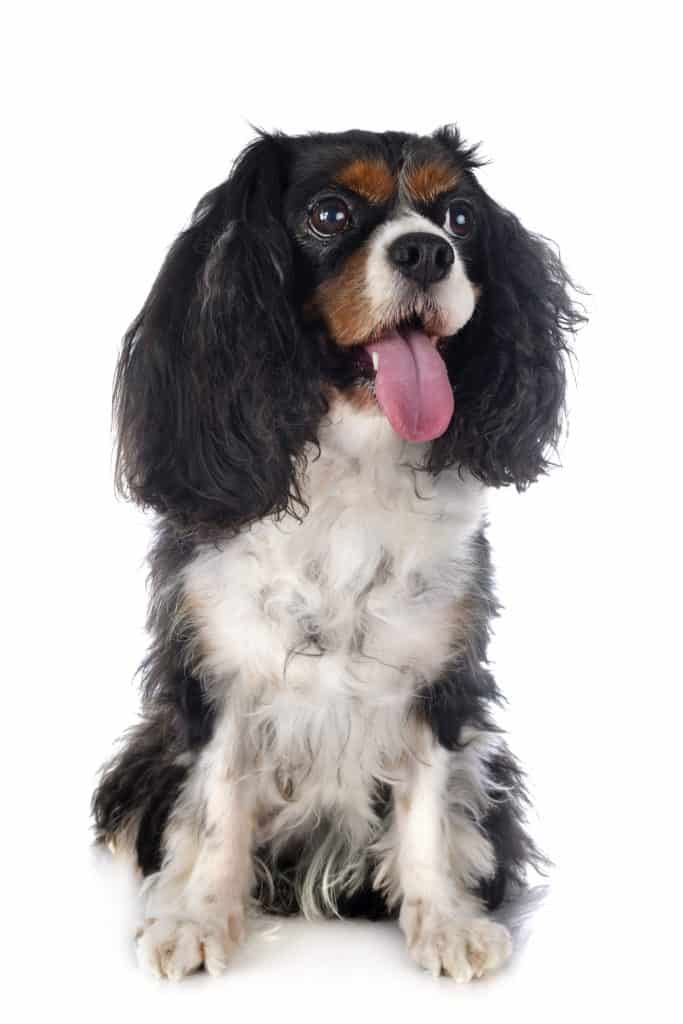
They need moderate levels of exercise with short walks divided over the day.
They need to be leashed while going out due to their spaniel nature of chasing everything moving.
They can be lazy bodies so they need regular games even indoors to keep them healthy.
An obese or overweight Cavalier requires more amount than normal to stay fit.
Grooming Needs (3/5)
They need brushing daily to avoid the tangling and matting of their fur coat.
Though they don’t have the need to be trimmed their coat, feathering on ears and hairs between the toes should be.
Also, ears should be checked for dirt sticking on the inside due to retained moisture.
Bathing not only makes their coat shiny it also gets rid of bacteria and sweat build-up in their fur.
Playfulness (5/5)
Generally described as playful these dogs are eager to chase everything that moves.
They are very agile and have a good energy level so they are always up for a walk outside.
They are active thanks to their spaniel gene and can even keep with a trotting horse.
They love playing be it with kids, cats or other dogs.
Trainability (4/5)
Training them requires consistent efforts and patience.
They have the willingness to learn new commands and tricks but take time picking them up.
Food is a great incentive for them with many basing their drive to learn anything on the treats offered.
- Intelligence (3/5)
They have average intelligence with them being good in agility and obedience.
They adapt well according to their situations with many of them having the flexibility for their owner’s routine.
They are also sensitive to their owner’s signs and signals.
Mouthiness (3/5)
They have a moderate tendency to chew or nib things around them.
Especially during the teething stage, they chew stuff to satisfy the urge and to ease the pain of growing new teeth.
Toothing toys can ease the discomfort they face and later be their boredom and stress reliever.
Price Group
Cavalier King Charles Spaniel cost around $1200 to $1500 as a puppy and can go up to $3500 so is considered one of the expensive breeds to buy.
Most people opt for adopting rescued dogs from the shelters.
It is advisable to check for the puppy or dog’s health before so to avoid most of the genetic diseases.
About Cavalier King Charles Spaniel
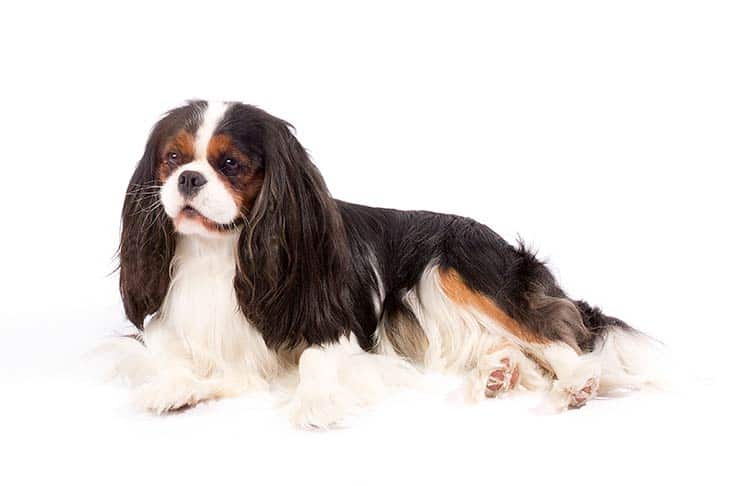
They are one of the largest toy dog breeds that are known for their shiny long hair coat.
Gentle and sweet dogs of this breed are good pets for apartment dwellers with the small area being no concern for them.
They have moderate exercise needs and are always up for any form of physical exercise.
Properly house pets they are mostly seen chasing cats, birds or cars whenever they are out.
They are also known as “Lap Dogs” and love to be in a human company.
These affectionate and loving dogs adapt well to their owners so they can be either be a couch potato or an energy bomb.
They are originally from England and enjoyed a period of popularity with the Royals.
They are known for being shown in paintings in the 16th and 18th centuries by many artists and painters.
Where Cavalier King Charles Spaniel Came From?
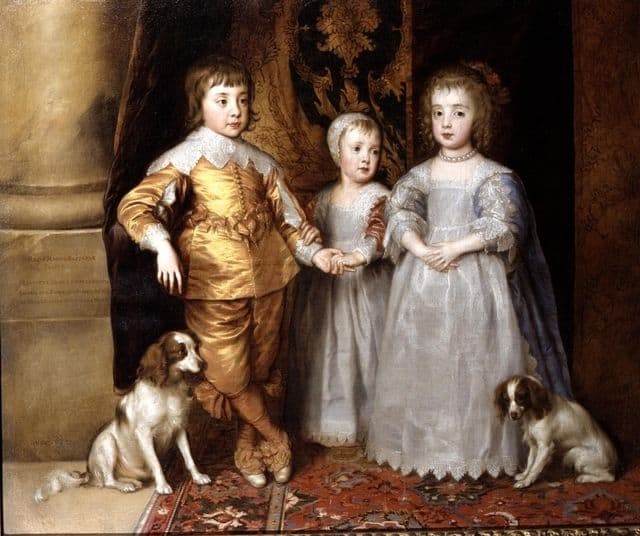
They have originated from Malta or Italy and introduced in England by Mary, Queen of Scots from France.
They had royal patrons in Charles I and Charles II who were the greatest admirers of this breed.
It is said that Charles II always had few spaniels around him and is said to neglect the kingdom’s affairs for the dogs.
The breed got their name from him due to his fascination for these dogs.
After the reign ended so did their popularity with people not wanting them to their association with the previous king.
In order to adapt them, they were breed with the pugs who were the new royalty favorite.
Their appearance changed considerably and they had a flatter face with a domed head shape.
In 1926, an American enthusiast Roswell Eldridge offered a prize to breeders to recreate the original species as shown in the old paintings.
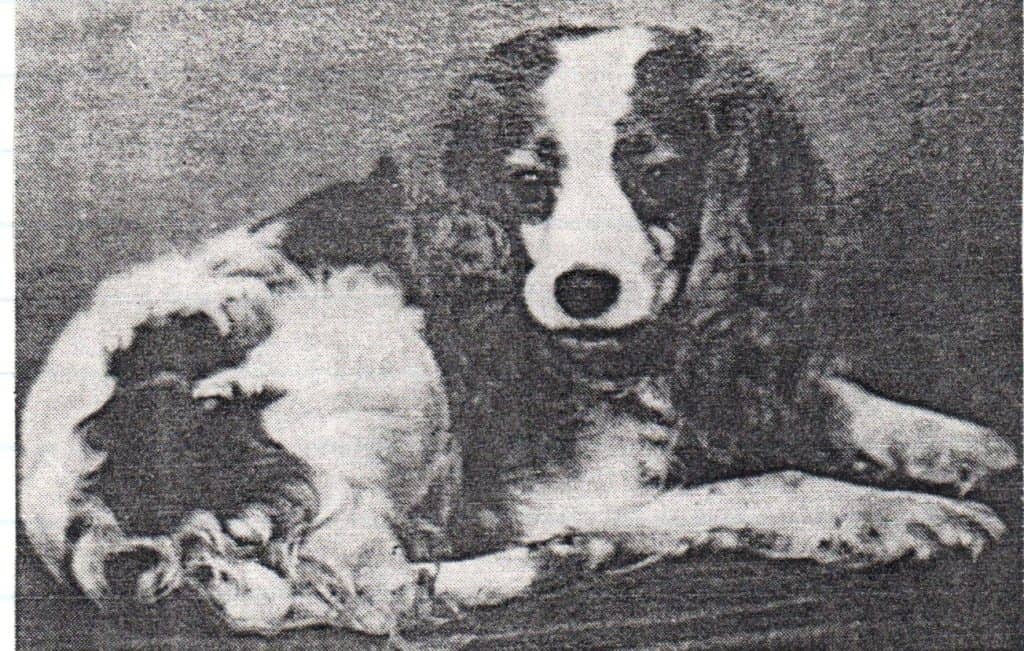
Ann’s Son owned by Mostyn Walker was declared the winner with all the specifics “long face, no stop, flat skull, not inclined to be domed, with a spot in the center of the skull” covered.
Thus it renewed interest in this breed but after the Second World War, only 6 dogs remained.
Most of the current dogs came from them and thus are prone to some genetic propagated diseases.
There is an urban myth that King Charles II decreed that this breed be allowed for every building in the country even the Parliament.
Size

They have a height of 12-13 inches in their full grown state as an adult.
They have strong sturdy legs with a slightly longer neck with stooping shoulders and a small firm body.
They are on the larger side of the toy dog breeds and them being smaller is generally associated with some disorder or medical defect.
They have a flowing straight or slightly wavy fur coat that sweeps by their side.
Trainability
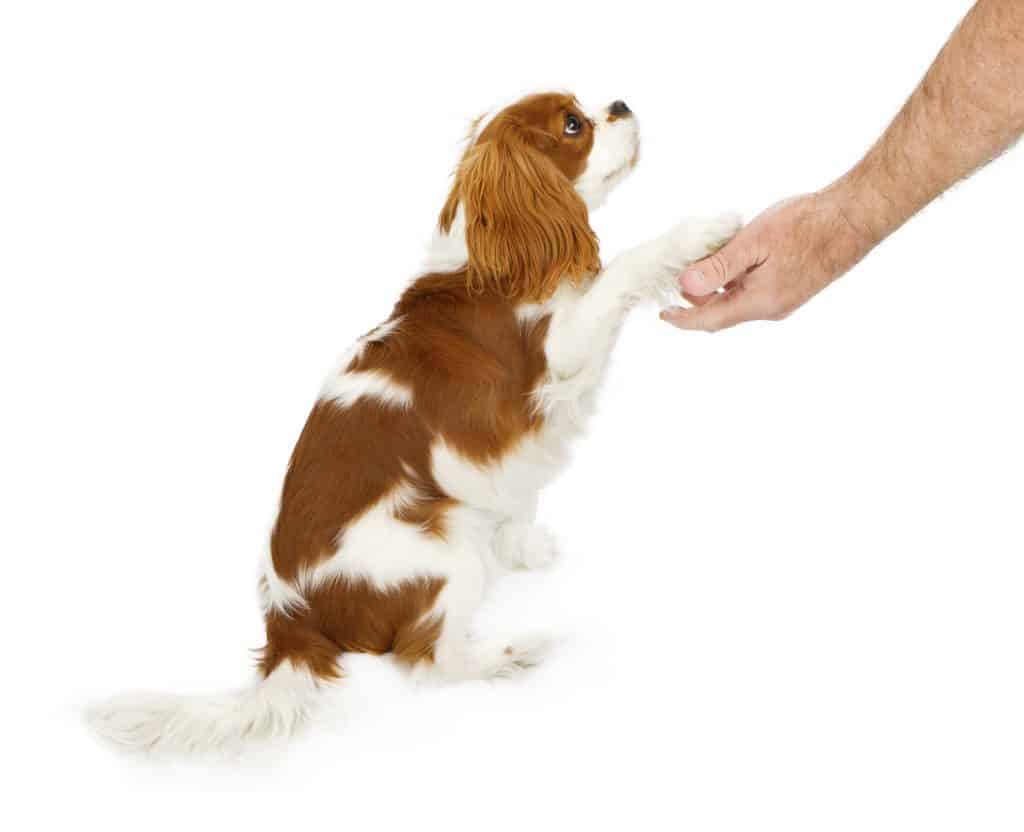
They are easy to train with many urging the owners to start their training from the puppy months.
They have an enthusiastic and eager approach to learning something new.
Along with good intelligence and a ‘to-please’ attitude they make for good learners though owners need to be consistent.
Training on how to behave inside the house and while out for exercise requires a firm and soft hand.
They are very sensitive and any type of negative reaction to them can result in them being shy and even hiding.
Constant praise and encouragement are to be given as they are slow to pick up commands.
Grooming

Even though they have great fur they don’t need much maintenance regarding that.
Cavalier King Charles Spaniel shedding occurs heavily twice a year during the summer and fall seasons.
They are at most an average shedder with a requirement of daily brushing to avoid matting and tangling of hair.
Bathing them once every two to four weeks gets rids of smelly bacteria and dirt.
Their ears have to be cleaned regularly as they have the tendency to retain moisture for a long time leading to infections.
Hair growing between their toes has to be trimmed regularly too.
Regular brushing of their teeth and nail trimming should also be part of their routine grooming regime.
Common Diseases
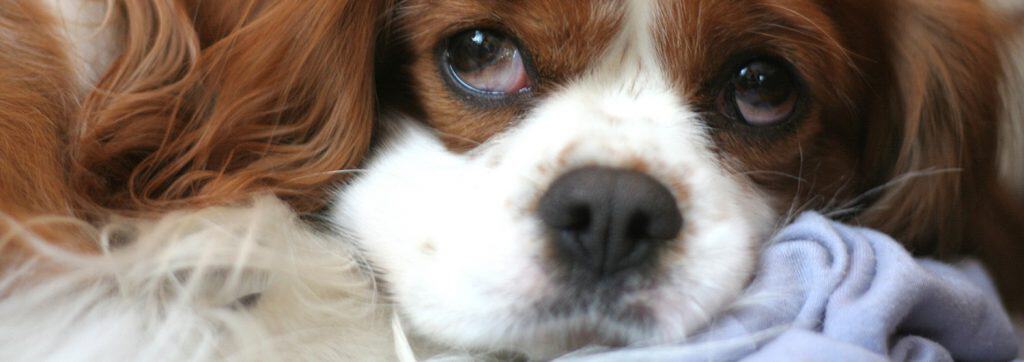
Even though they are a healthy breed they can be afflicted with some inheritable diseases.
TARGETING THE BONES
- Luxating Patella:
Dislocation of their knee cap (patella) or simply slipping of bones from knee joints causes crippling pain in some cases.
It happens when knee bones aren’t prominent due to bone defects or are too weak to lift their weight.
Limping, frozen legs and sudden yelps are some signs that your dog is affected with this condition.
A grading scale is used to know if the dog has a tight knee or one with chances of cap slipping.
In mild cases, physical therapy and exercise along with medications are enough.
Surgery and treatment are required once diagnosed in case it severe.
- Hip Dysplasia:
It is the deformity of the hip joints due to genes and is common.
It gradually progresses with age and isn’t fully evident until they become adults.
Dogs showing signals like less activity, trouble in moving, unusual gait, should be shown to vet.
X-Rays aren’t reliable in showing this disease.
In severe cases, affected dogs may require surgery and medications to keep pain in check.
TARGETING THE EYES
- Keratoconjunctivitis Sicca:
This condition arises due to the reaction of an abnormal response of the immune system to the dog’s tear glands.
Also known as “dry eye” it results in less production of tears which leads to the dry and inflamed cornea.
Symptoms are redness in eye, film or discharge on the eye.
Due to severe discomfort like persistent burning cornea maybe scarred with the result being permanent blindness.
With proper treatment, this condition can be kept under control or even be healed.
Eye drops with antibiotic and inflammatory properties should be used after showing to the vet.
TARGETING THE NERVOUS SYSTEM
- Syringomyelia (SM):
This is a nervous system disorder that happens due to the small size of the rear end of the skull.
It is due to a congenital bone deformity and results in crowding of cerebellum and brainstem and obstruction in the opening at bottom of the skull.
Due to this obstruction, the cerebrospinal fluid can’t properly flow and collects in cavities in the spinal cord.
This causes mild to severe pain in the head and neck regions and partial paralysis.
Symptoms are scratching the back of the neck on one side, whimpering and yelping, sensitivity on touching the neck, wobbly walking or holding head in a certain position.
Almost 30-70% of this breed is affected by this painful genetic disease.
It can be mild that requires just medications and minor correction surgery to be back in their normal lives.
For severe cases, there is no cure that is currently available.
- Episodic Falling (EF):
This neurological disorder is caused by a single recessive gene affecting 1% of the Cavalier King Charles Spaniel.
There is an increase in the muscle tone and the muscles can’t relax.
It is often confused with epilepsy though in this dog remains conscious throughout the episode.
Symptoms can be mild like random falling episodes and severe with seizure-like episodes for a few hours.
It can be identified with gene test and symptoms can start from 5 months.
TARGETING THE BODY:
- Heart Mitral Valve Disease (MVD):
It is a leading disease that many dogs are affected with and is one of the leading causes of their death.
It is rare to find an adult dog with this disease with 48% of their deaths being caused by that.
In this, there is a defect in the mitral valve of the heart as it gradually thickens and degenerates resulting in the blood leaking out.
It, in turn, forces the heart to pump more blood and faster thereby increasing the leakage from the valve.
At the age of five, most of the dogs are identifies as suffering from this disease.
Heart murmurs are the first signs of this fatal disease that progresses as the dog ages.
Vets and other concerned authorities have made specific guidelines that eliminate the onset of this disease
Always ask for the puppy from breeders who follow the guidelines.
- Primary Secretory Otitis Media (PSOM):
Also known as “glue ear”, a mucus plug fills the middle of the inside of the dog’s ear.
It can cause the tympanic membrane to bulge thus causing pain and sensations in the head and neck.
It affects almost half of them and has symptoms like SM with some vets confusing the ailments sometimes.
Some of the common health problems that affect toy breeds including Obesity also affect this breed.
They can also have a case of separation anxiety due to their dependence on human’s presence near them.
Feeding
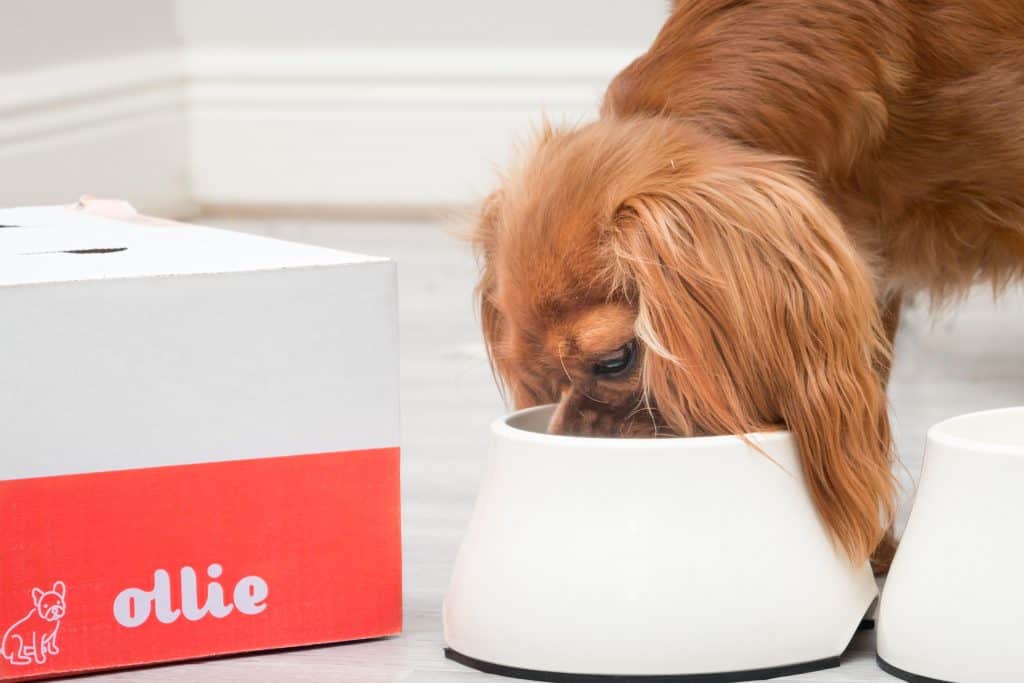
Puppies need to be fed more frequently as they have a higher energy requirement.
Proteins and fats are the most important ingredients that should be present in their diet.
Adult dogs have an average calorie intake of about 550 daily while puppies have around 990 calories a day.
Artificial flavoring, grains, fillers, and soy along with some other foods should be avoided at all the cost.
Adults have to feed twice a day and puppies need to feed four times a day.
Vitamins and extra nutrition supplements can be added to their diet to make them healthy and active.
Suggested: Senior Dog Food
Vaccination and Care

Vaccinations required at the puppy age are:
Age Vaccination
6-8 weeks DHPP, Bordatella
10-12 weeks DHLP-P, Coronavirus, Leptospirosis
14-16 weeks DHLP-P, Rabies, Lyme
18-20 weeks DHLP-P
As an adult they must be given:
Time Vaccines
Annually Rabies
Annually DHLP-P
Annually Bordatella
DHLP-P: Distemper, Hepatitis, Leptospirosis, Parvovirus, Parainfluenza
Along with these owners should give Heartworm and flea medicines on the advice of the vets.
Suggested: Guide To Dog Vaccination
Monthly Expense Estimation
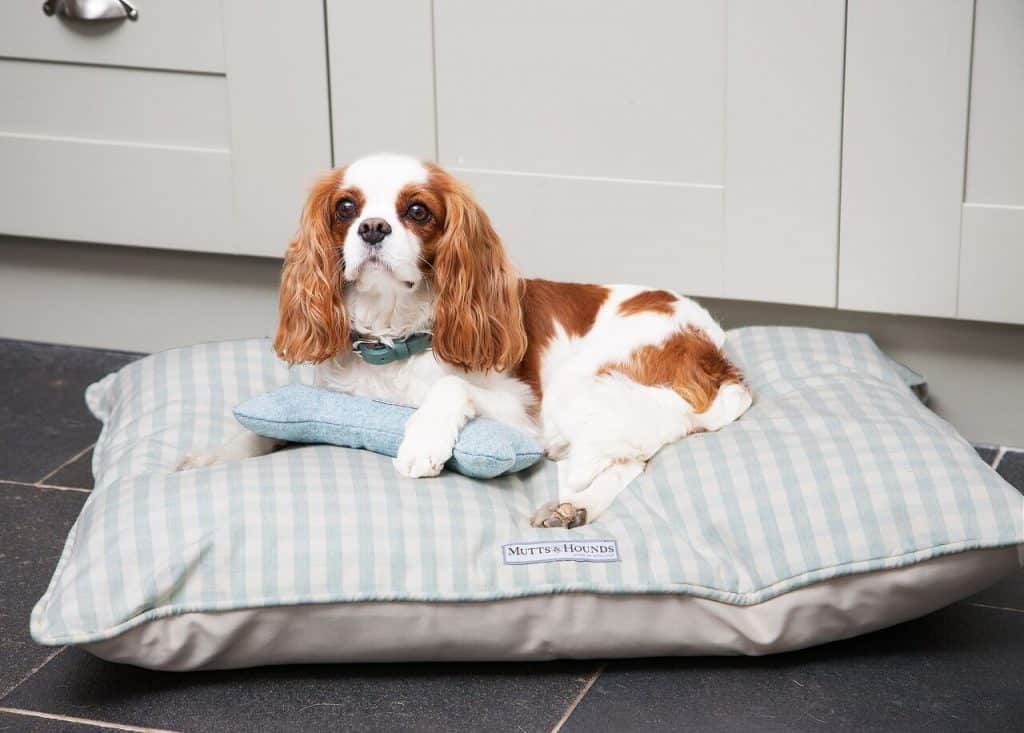
The monthly expense of keeping a Cavalier King Charles Spanielis around $58-$77.
The food costs around $25 per month that is of good quality including their treats.
The first few months of raising a puppy cost more and it gradually decreases as they grow up.
Good health of the dog is also a factor that reduces general hospital bills for the owners.
Additional costs include their toys and furniture which are mostly annual expenses.
Visits to vets for vaccinations, deworming and flea medicine adds to that.
Groomers add to the bill but this breed requires less maintenance hence can be groomed at home.
Behavioral classes required due to their separation anxiety issues should also be considered.
Behavior With
Children:
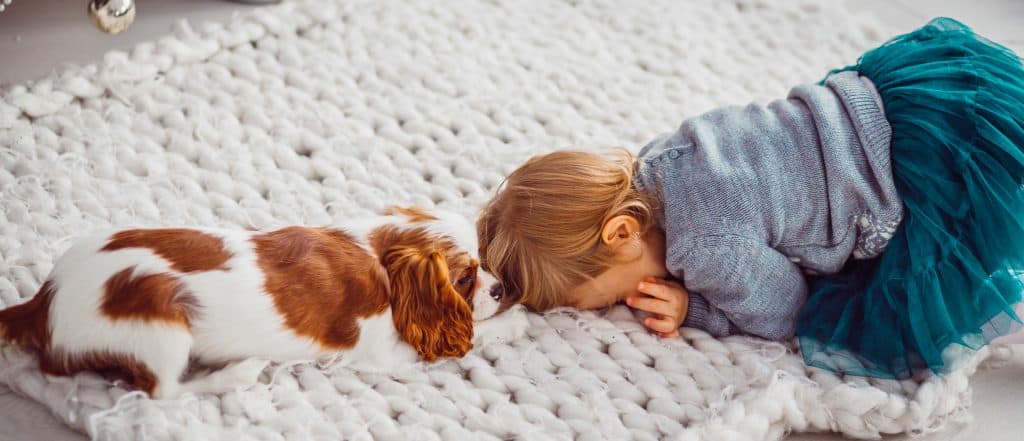
They get along with children due to their affectionate and loving nature.
They aren’t suitable for small children who might treatment them roughly by hugging them tightly or heavy pets.
They are ideal for families with children and other dogs.
They are even-tempered and gentle with great affection and loyalty to their owners.
They are peaceful and polite to everybody with no hardly any aggression in them.
Dogs
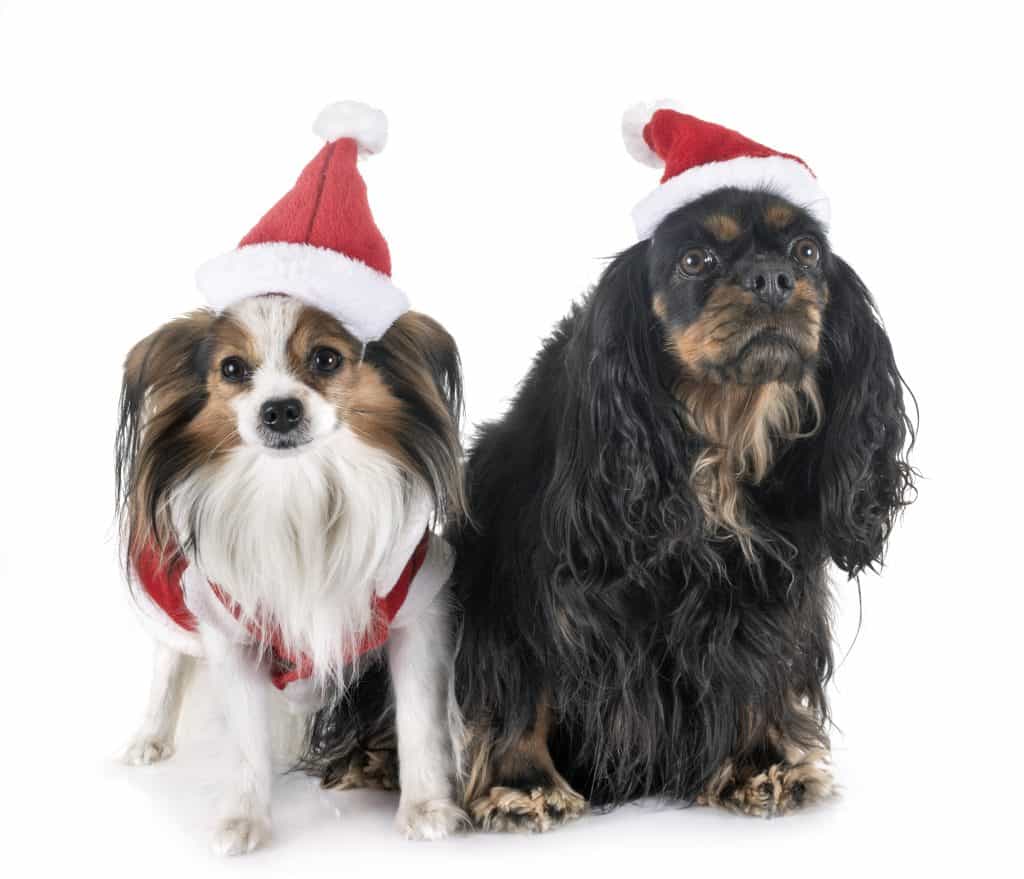
Their basic instinct on seeing other dogs is to offer the first paw of friendship.
They don’t show any sign of aggression or bark in front of other dogs thus not seen as intimidating.
They strive for the company of others and are very social to all dogs.
But when in puppy phase they have to be exposed to new dogs and situations so they don’t grow up shy and reserved.
Cats
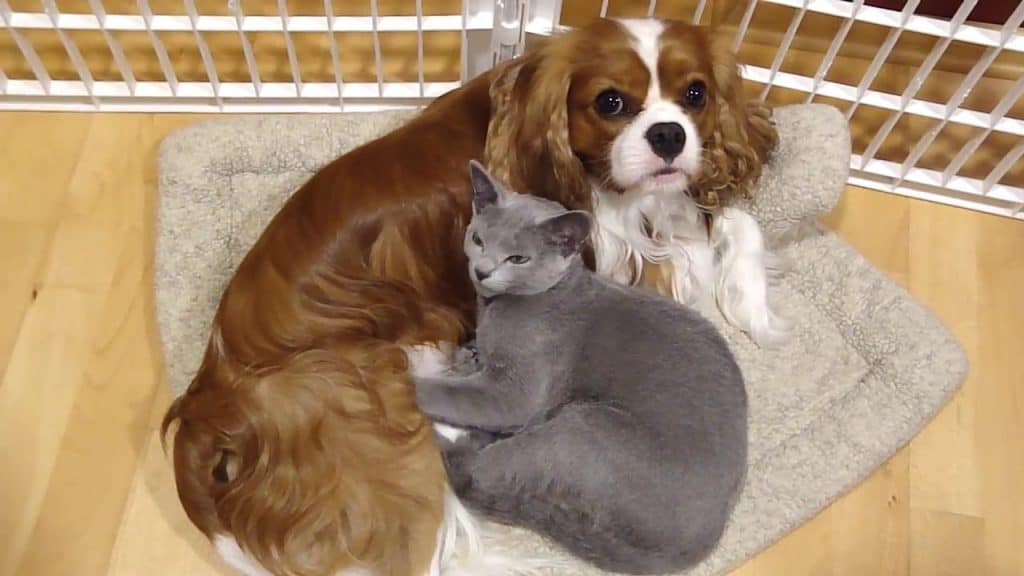
This breed is famous for getting along with other animals with ease due to their friendly nature.
An energetic, curious cat can be their ideal playmates with both enjoying a game of chase.
With their sizes being nearer to each other they don’t see each other as intimidating.
They should be introduced slowly to each other first so they warm easily to each other.
Their spaniel instincts to hunt and chase can make them irritating to any cat.
They need to be trained not to chase any cat that they lay their eyes on as injuries can happen while running on streets and roads.
Overview
This breed classified as a toy dog breed in America while the UK considers them to be a companion dog.
Originally their purpose was to warm the laps of noble ladies and attract fleas leading to them being nicknamed as “Comforter Spaniels”.
Quiet, affectionate and gentle is how Cavalier King Charles Spaniel’s temperament is said as to be.
Small in size with a shiny coat of straight or slightly wavy hair with large mellow eyes make them good show dogs.
They have a friendly nature to all animals and strangers and get along with all others.
Due to their spaniel genes, they tend to chase everything that moves in front of them necessitating the need for leashing them.
They have a long history of being involved with English royalty due to their charms with Charles II as their admirer.
Something Fun

- Blenheim name comes from the battle as these dogs have a spot on their forehead.
It is said that Duchess of Marlborough touched a pregnant dog there while waiting for her husband to return for the ‘Battle of Blenheim’.
Next day the Duke returned and the puppies were all born with the mark.
- They were bred from toy Spaniels including extinct Toy Trawler Spaniel.
- Their rise in popularity is recent with the popular show “Sex and the City” where a character, Charlotte York, had one as a pet named Elizabeth Taylor.
- They made the biggest jump in the AKC popularity charts in the last two decades.
This is all from our side about this sweet and gentle dog breed.
To tell us about your thoughts, feel free to write in the comment section below.
Happy petting to you!





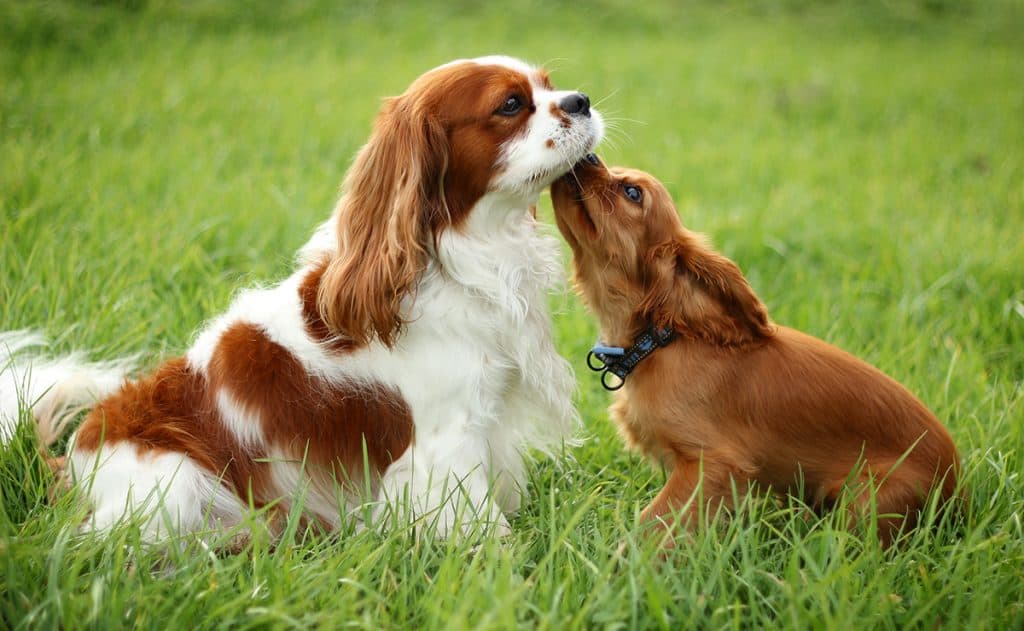
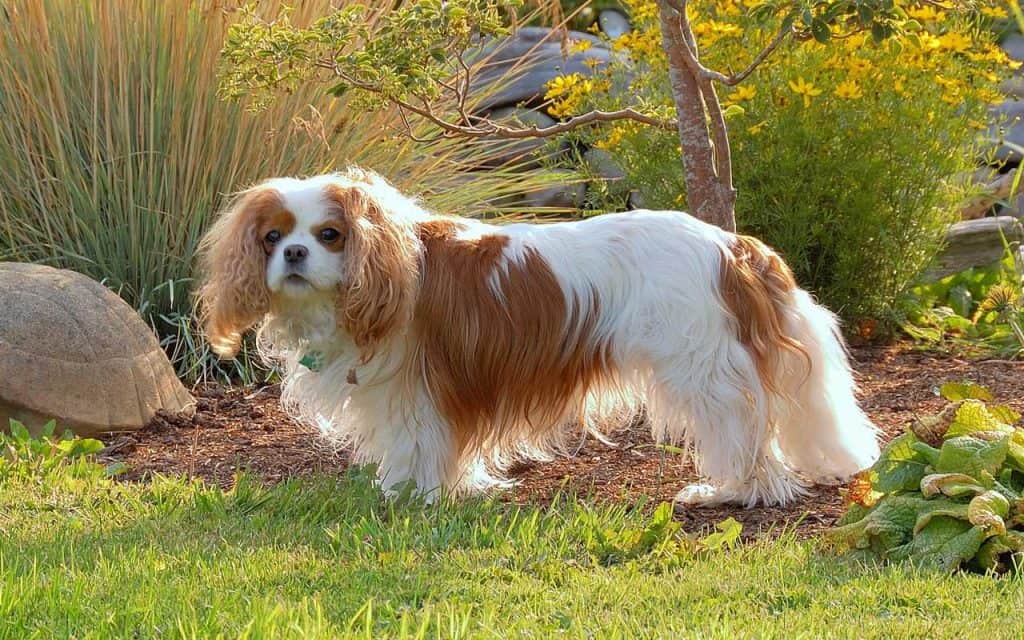

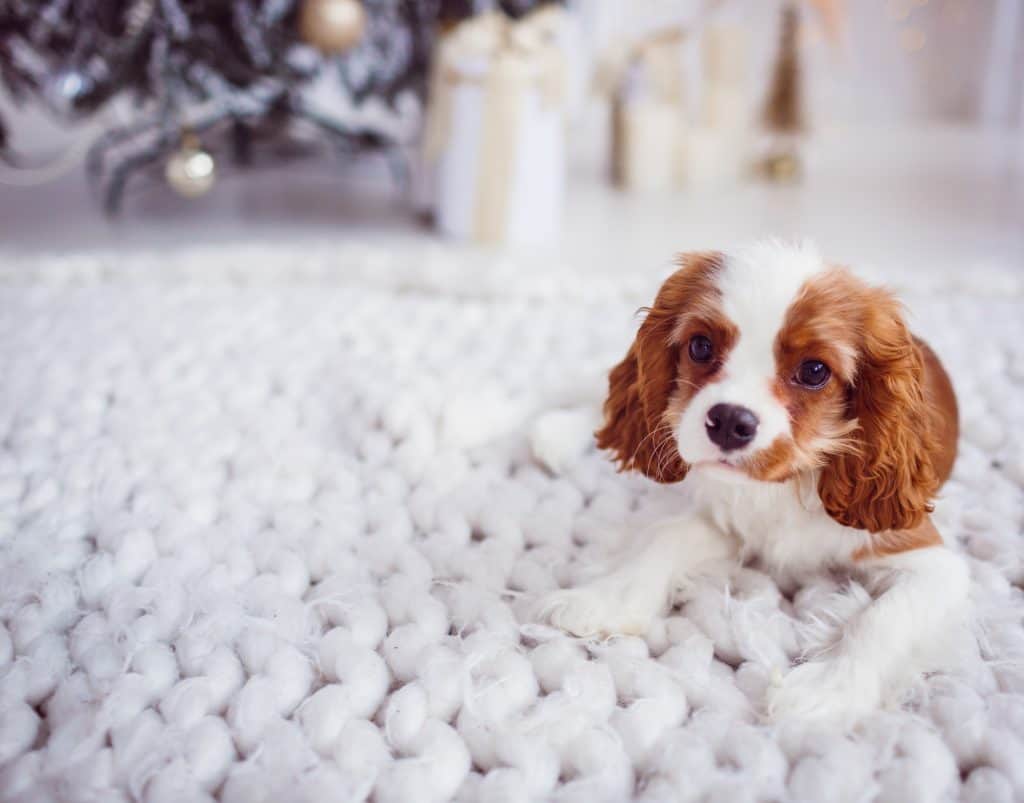
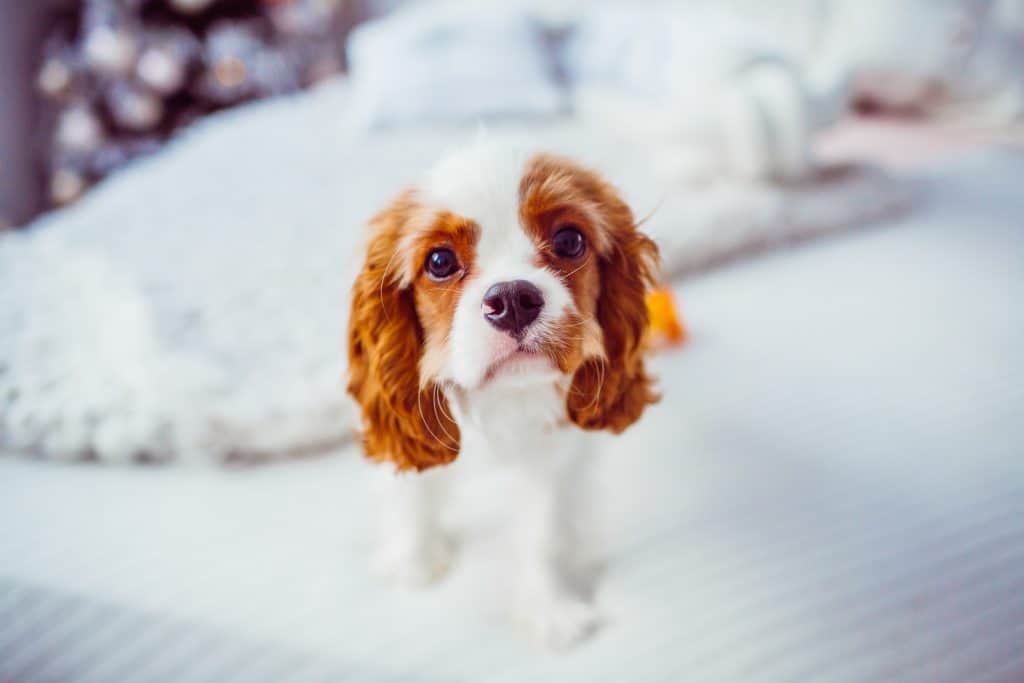








[…] are made by crossbreeding many different breeds like Border Collies, King Charles Spaniel, and Pomeranian, […]
[…] Even though they’re small in size, their energies are no match for their size. They are sporty in nature due to the genes running in them from their spaniel ancestors. […]
[…] 8. Cavalier King Charles Spaniel […]
[…] Cavalier King Charles Spaniel is a small toy dog with a glossy hair coat and big doe eyes that will capture your heart […]
[…] Cavalier Spaniel is known to be a very loving, patient and sportive dog. Renowned for their easy to please nature, […]
[…] Cavalier King Charles Spaniel is not just all about looks and cuteness. They are very reliable when it comes to provide emotional […]
[…] one but many dog breeds that are apartment-friendly. Namely the Greyhound, Beagle, Pug, Chihuahua, Cavalier King Charles Spaniel and almost all the smaller fluff […]